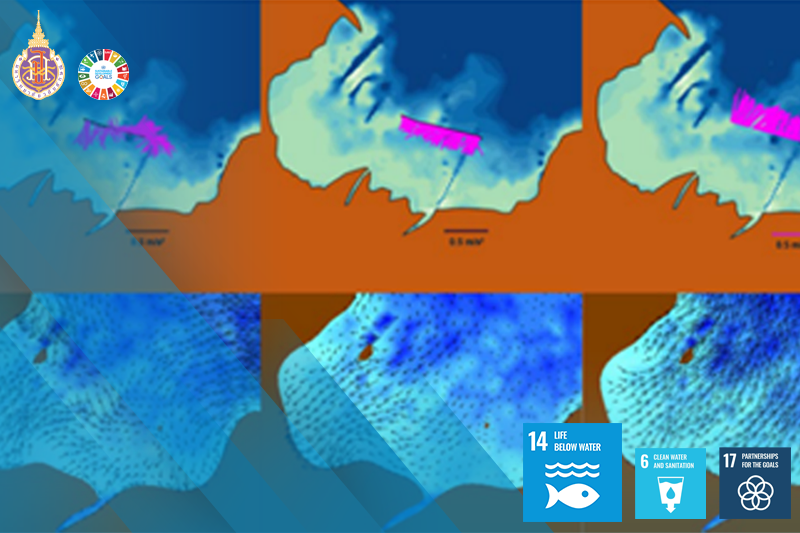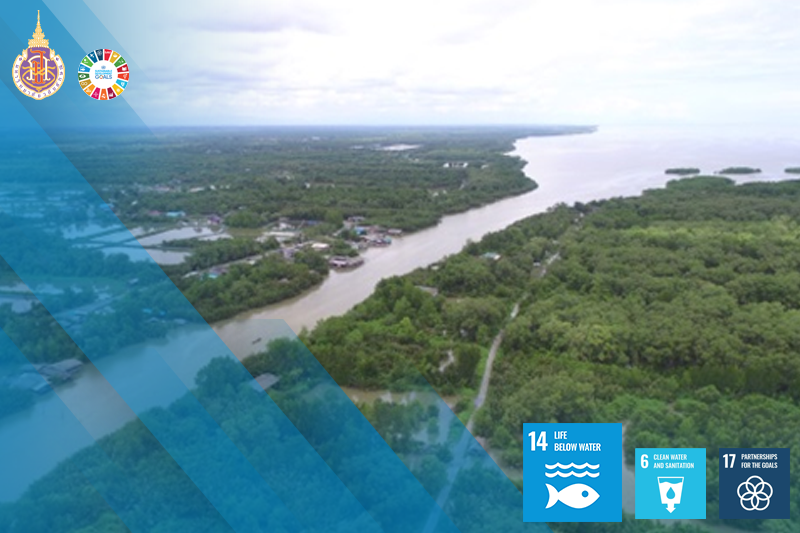Walailak Sustainable Food Waste Tracking and Separation System for the Whole University
Walailak University places a high priority on efficiently managing food waste and surplus food to mitigate the impact of food waste generated during distribution and consumption for the whole university. To establish clear reduction goals, the university has recognized the importance of closely monitoring food waste produced from meals served on campus throughout the year. To formulate effective solutions for food waste, we have implemented a comprehensive measurement system that tracks food waste at various stages, including the beginning, middle, and end of the process. This includes:
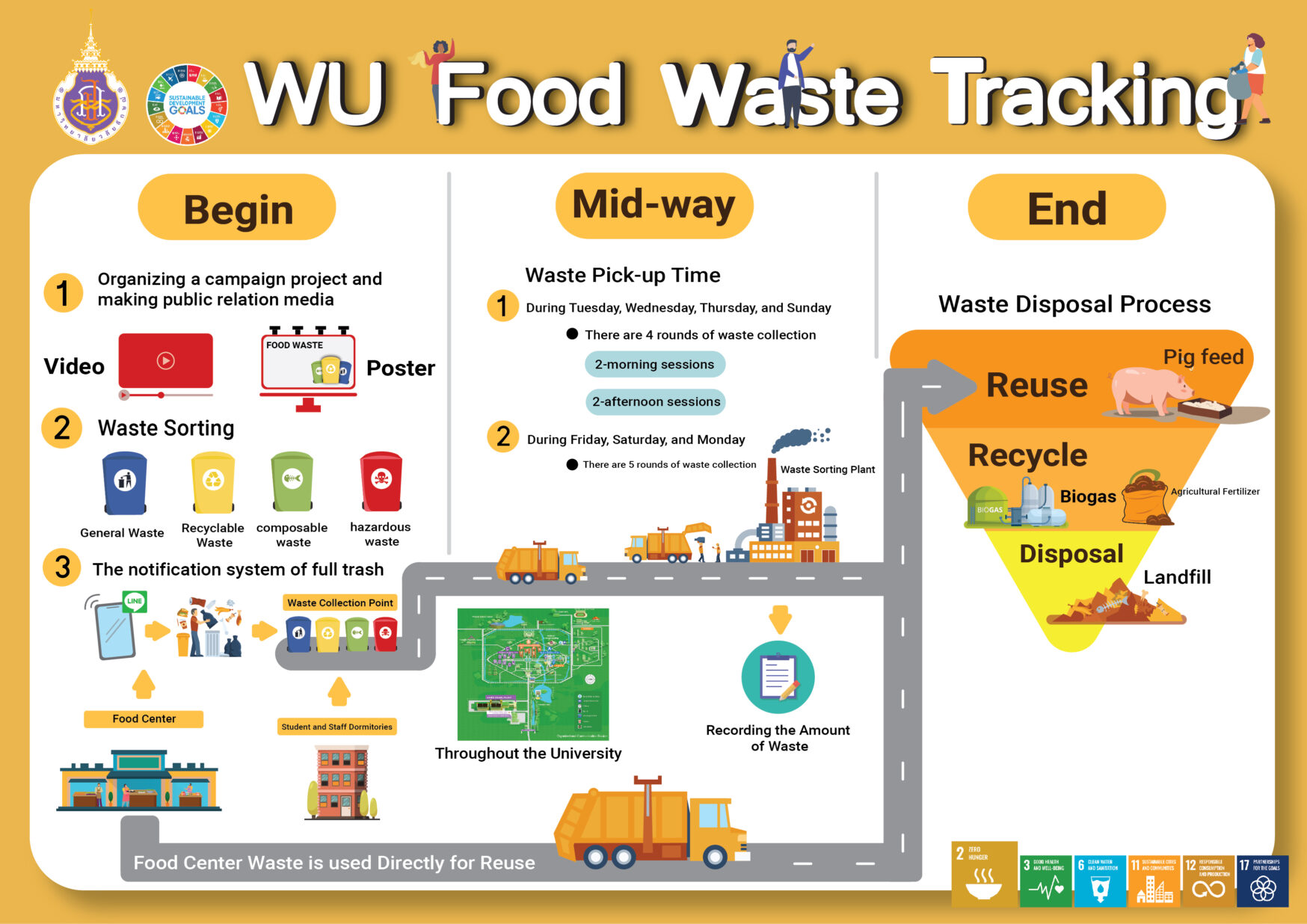
1. Beginning:
Food waste within the university campus is from various sources, including food centers, markets, student and staff dormitories, office buildings, sports centers, and parks. To track and manage food waste effectively from its source, the following processes have been implemented:
1.1 Launching a Campaign and Public Awareness: Walailak University, with the Environmental Health Program, has initiated a campaign and developed public relations media to increase awareness and prevent food waste and surplus food generation. They aim to educate users about waste separation, detailing the categorization of waste and the destination for each category.


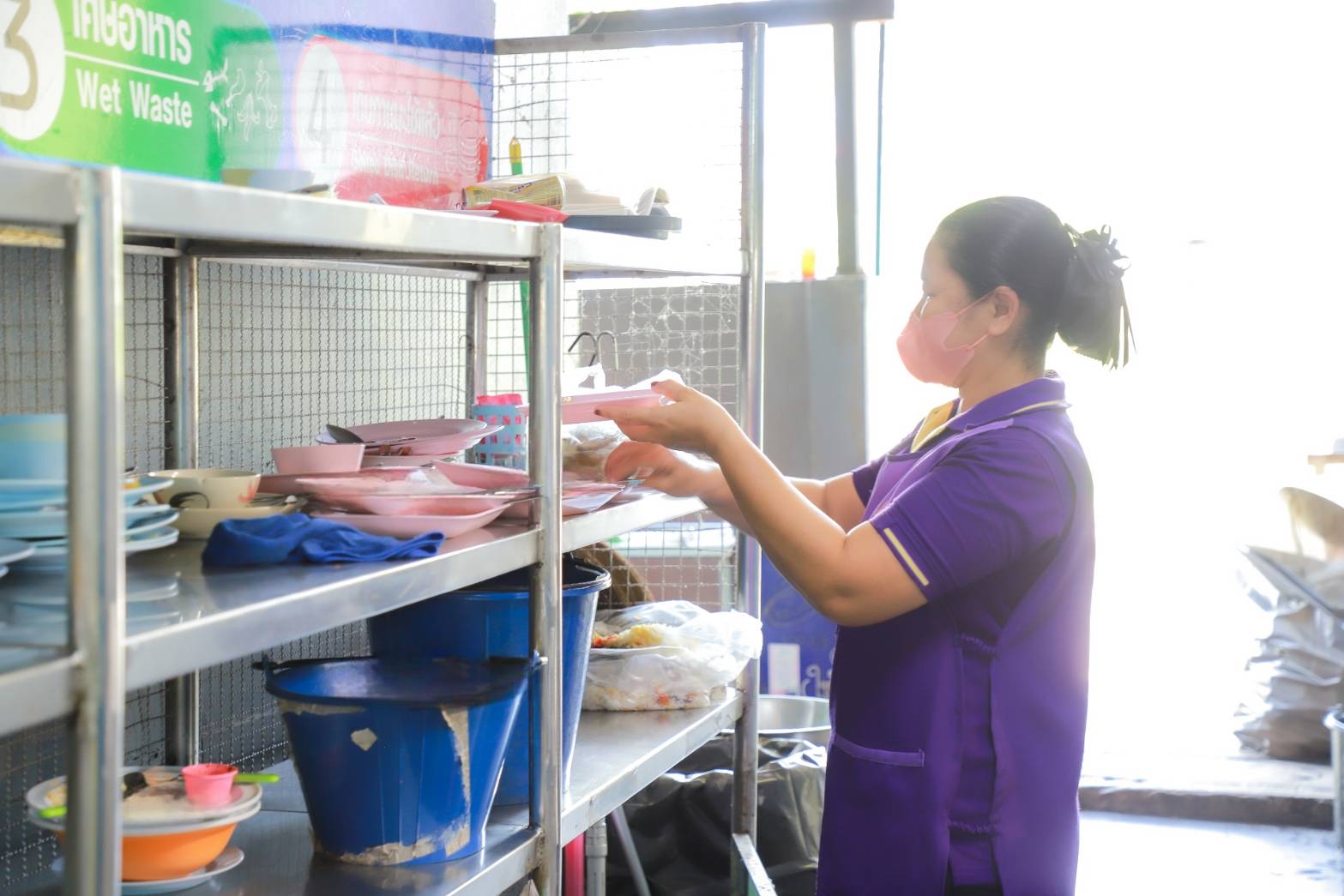
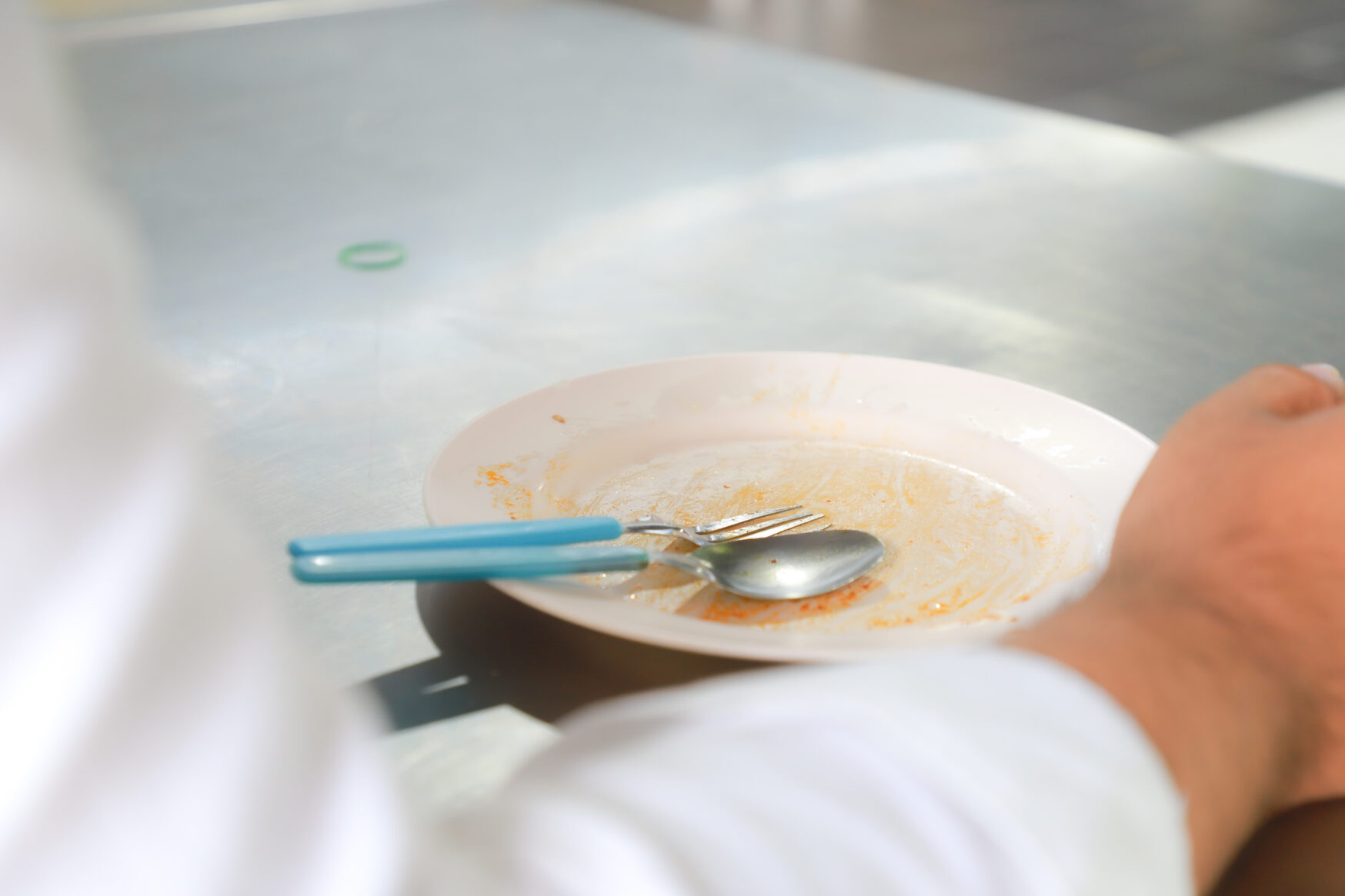
1.2 Waste Separation: To ascertain the daily amount of food, the university places significant emphasis on waste separation. It is essential not to mix food waste with regular waste since it complicates the recycling and utilization process. To ensure proper separation, large waste labels have been introduced to enhance visibility. Additionally, sample bins are provided to help users comprehend and correctly sort waste. By arranging all trash bins uniformly, users have an understanding and incentives for waste separation. Waste is classified into four categories: compostable waste, recyclable waste, general waste, and hazardous waste. Each type of waste undergoes distinct separation and utilization methods. Food waste, which consists of decomposable, perishable, and odorous items like food scraps, fruits, and vegetables, is handled differently.
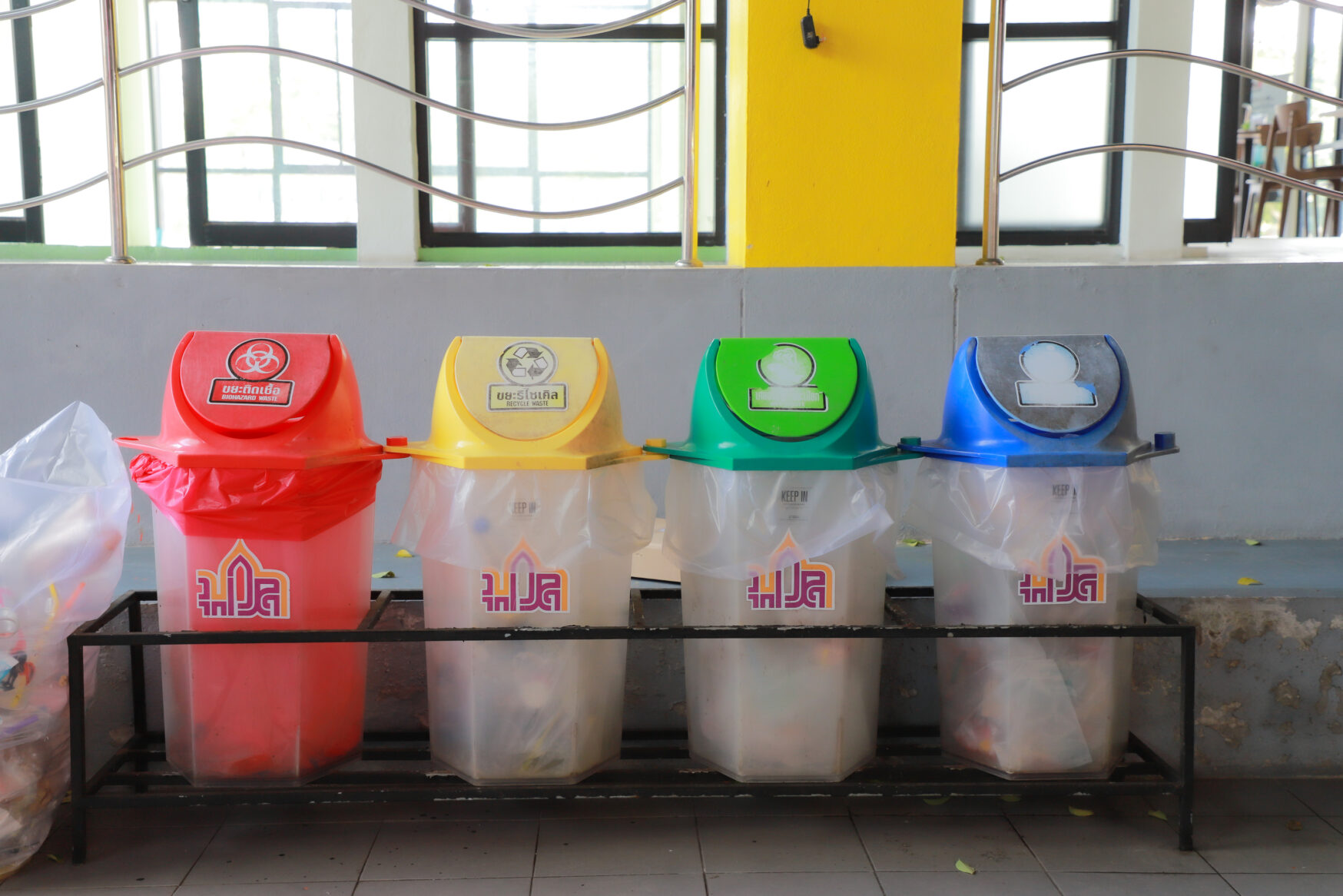
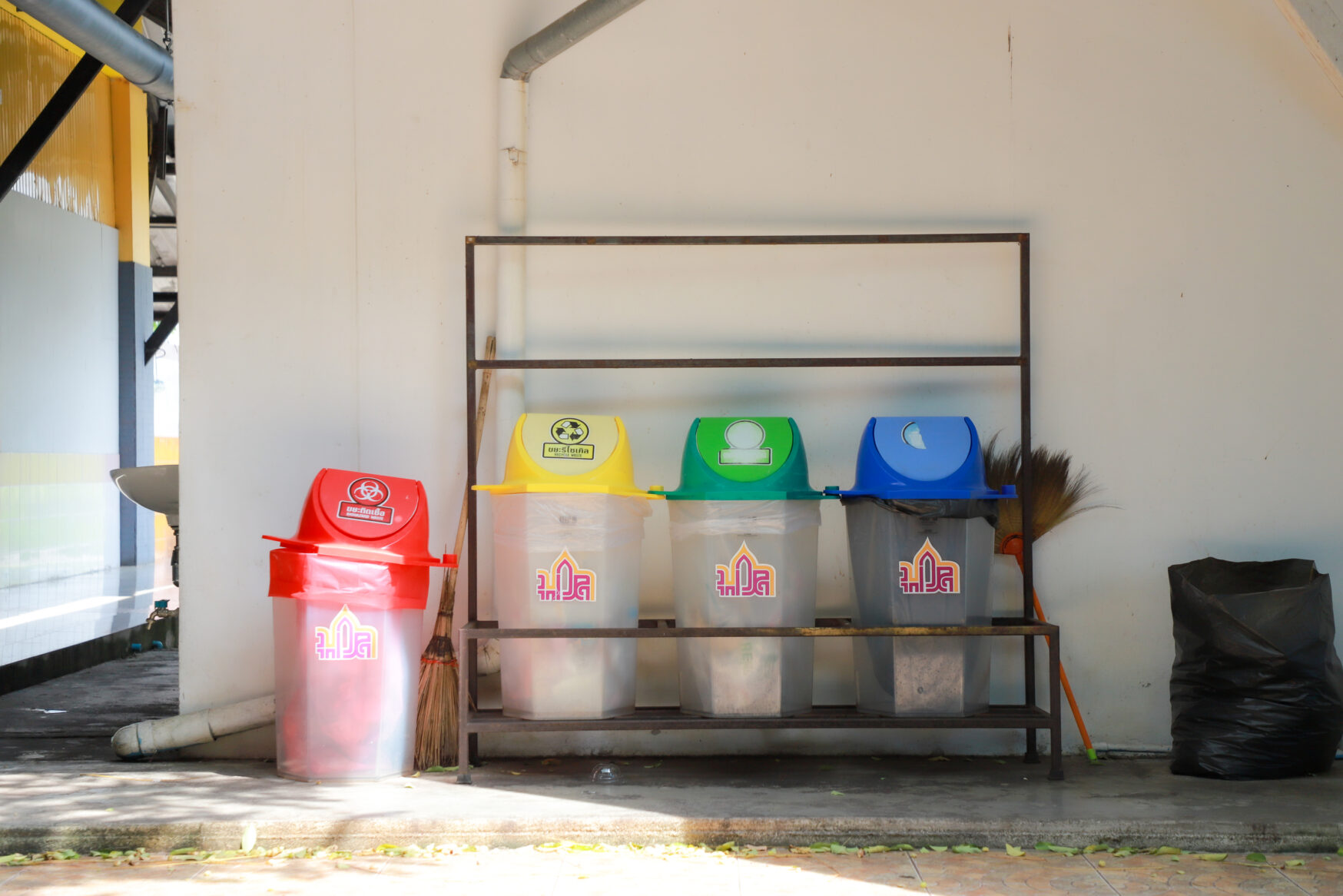
1.3 Full Trash Notification System: A notification system has been established to alert users when the trash bins reach capacity through the Line application. The university’s staff promptly empties the bins and transports the waste to designated collection points based on waste type. Afterward, the bins are returned and repositioned according to the specific waste type labels affixed to the walls.
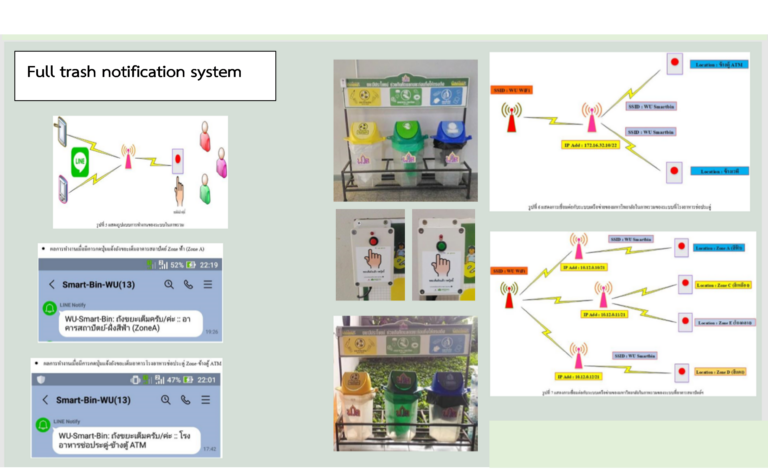

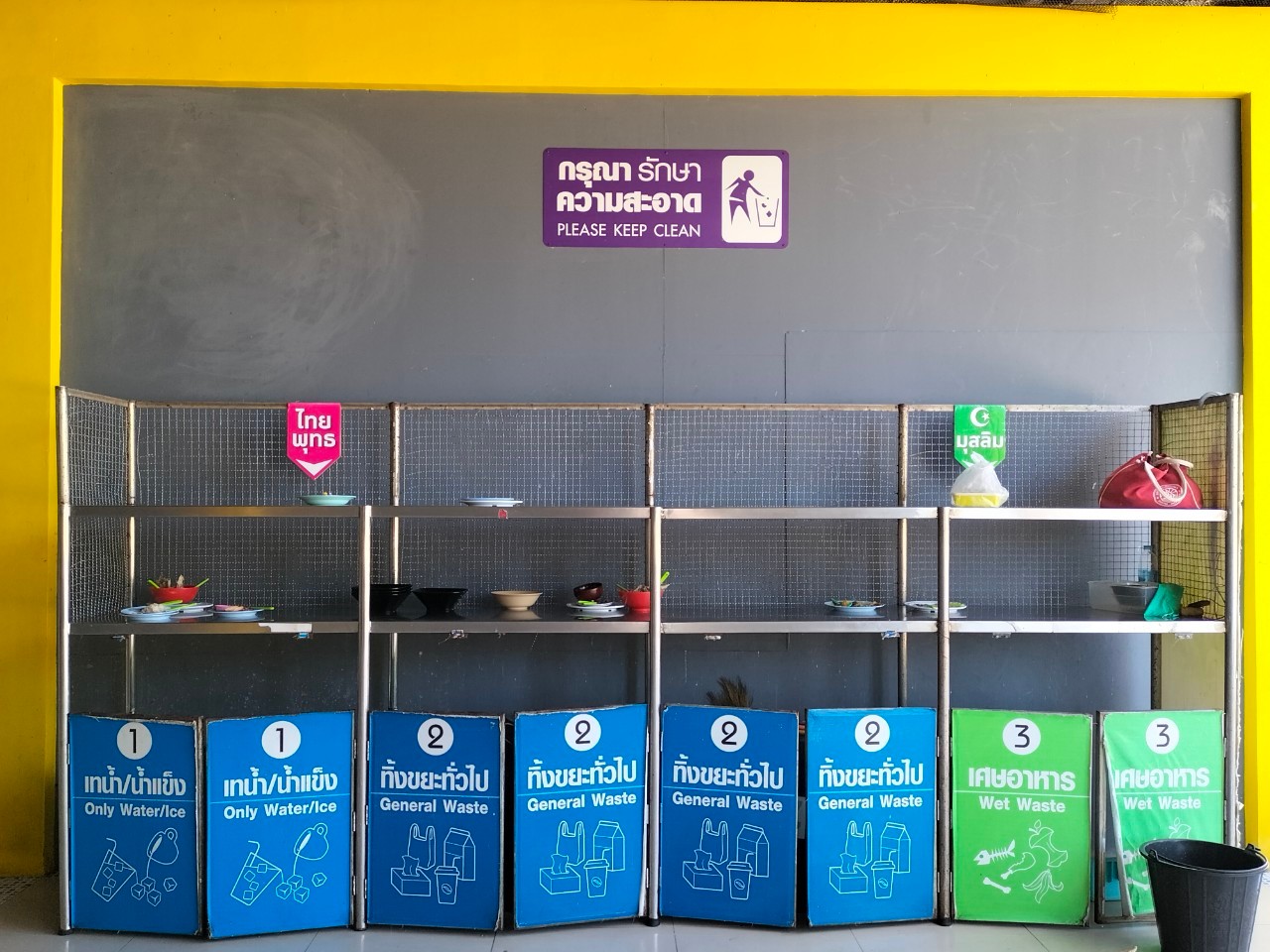
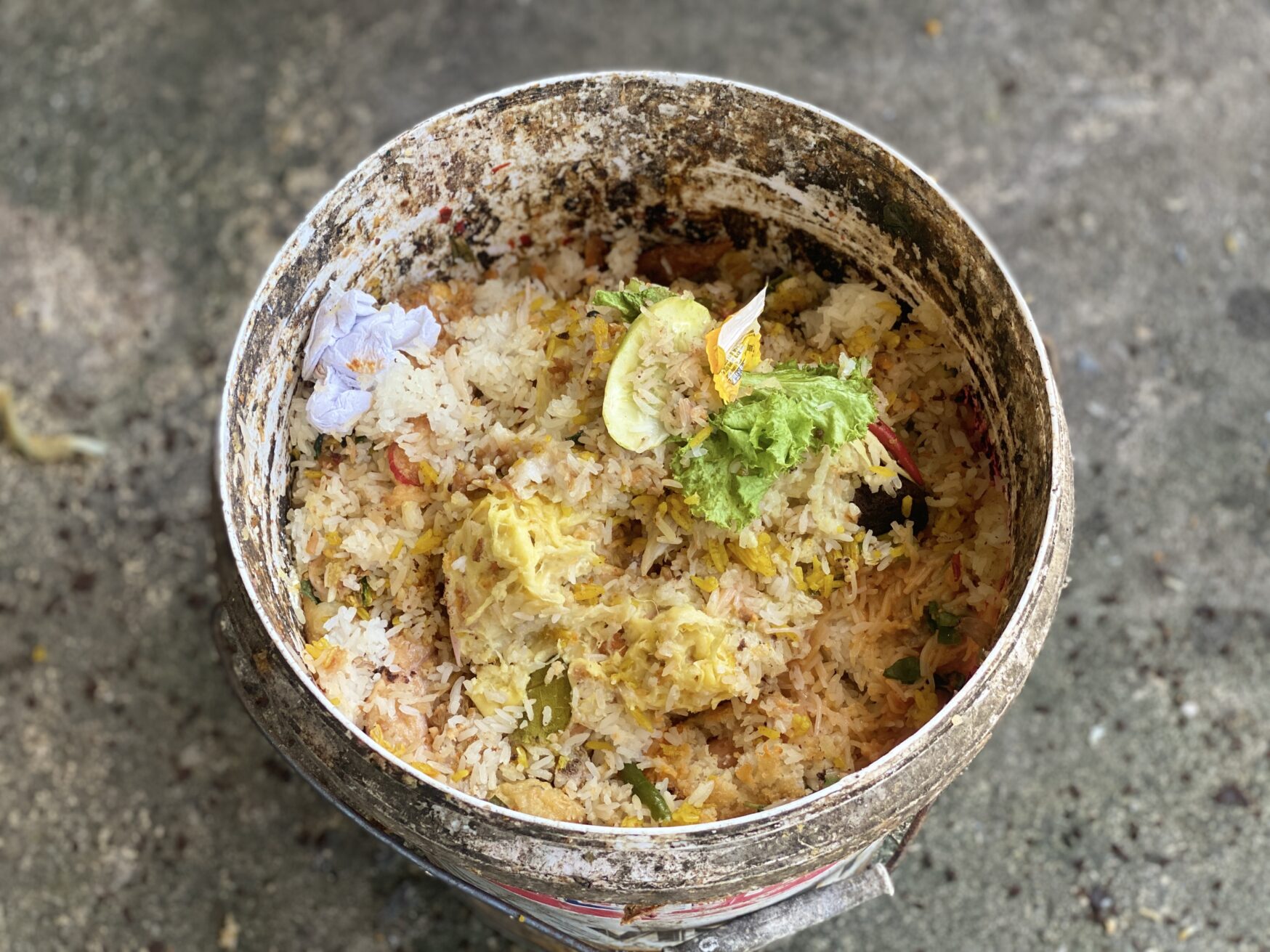
2. Middle:
The university has implemented an efficient waste collection system involving waste trucks that monitor the campus to gather waste from designated collection points. To ensure thorough waste collection and assess the routes effectively, the amount of food waste generated is closely tracked. The collection routes and schedules are organized as follows:
2.1 From Tuesdays to Thursdays and on Sundays, there are four rounds of waste collection, with two rounds in the morning and two in the afternoon. The details are as follows:
- Round 1: Student dormitories and administrative buildings
- Round 2: The Center for Scientific and Technological Equipment, academic buildings, Walailak University Hospital, Large Animal Hospital, and Walailak Park (inner line)
- Round 3: Staff accommodations, sports fields, Botanic Park, and Smart Farm Walailak University (outer line)
- Round 4: University canteens
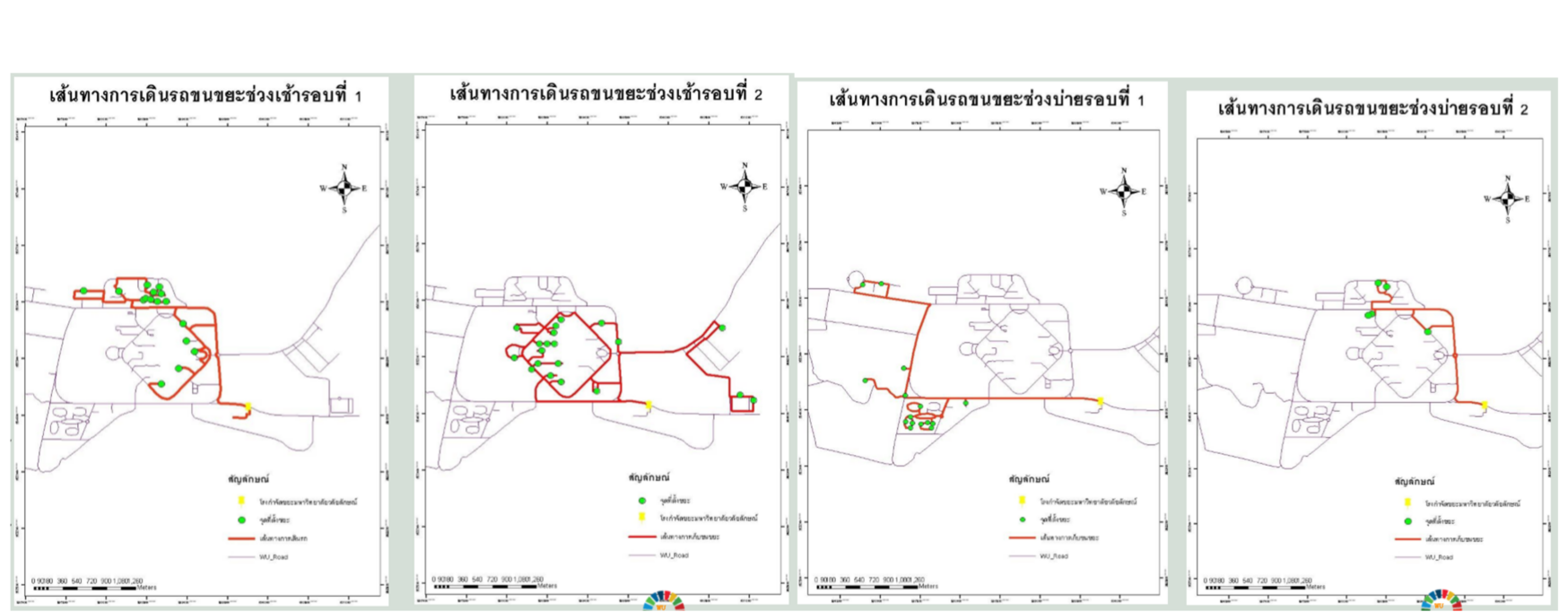
2.2 On Fridays, Saturdays, and Mondays, there are five rounds of waste collection, with two rounds in the morning and three in the afternoon. The details are as follows:
- Round 1: Student dormitories and administrative buildings
- Round 2: The Center for Scientific and Technological Equipment and academic buildings
- Round 3: Walailak University Hospital, Large Animal Hospital, and Walailak Park (inner line)
- Round 4: Staff accommodations, sports fields, Botanic Park, and Smart Farm Walailak University (outer line)


The Waste Collection Points
- Walailak Sport & Health Center
- The Center for Smart Farm
- Bota Market Chic&Chill
- Student Dormitories
- AD Building
- CSE
- Academic Buildings
- Staff Dormitories
- Chopradu Food Center
- Activity Building Canteen
- Janpradu Market
- Administration Building
- Large Animal Hospital
- WU Park
At central locations and canteens, there is a direct sorting process to separate waste for potential reuse, such as feeding it to the university’s farm animals. Waste trucks collect and deliver waste to the designated sorting facility for each waste type. Data collection, tracking, and measurement methods are in place to record the amount of food waste. Performance reports are generated to analyze data and develop effective action plans aimed at achieving waste reduction goals. Each waste type’s quantity is recorded at least once a week, and waste sorting and data collection are followed up at least twice a month.

Besides, in the food centers or canteens, there are direct guidelines for waste separation and bins specifically for food waste, the sub-type of compostable waste. This food waste is collected and reused to feed the university’s pigs on campus or at other designated points. Waste trucks collect and transport waste to the waste separation plant according to their respective types. There is a method for data collection, tracking, measuring the amount of food waste, and recording the quantity of leftover or lost food and food waste. This information is used to produce performance reports, allowing for analysis and the development of more effective action plans to achieve the desired goals. Each type of waste is recorded at least once a week, and waste separation and data collection are monitored at least twice a month. From this operation, it has been observed that the average quantity of food waste is approximately 20.72 kilograms per day. The focus is on a system of recording data and continuous monitoring, using statistical results to enhance future food waste management.
3. End:
The food waste separation process at the waste plant provides a means to monitor food waste quantities and evaluate potential utilization. The operational methods for managing food waste, ranging from the highest to the lowest amounts, include:
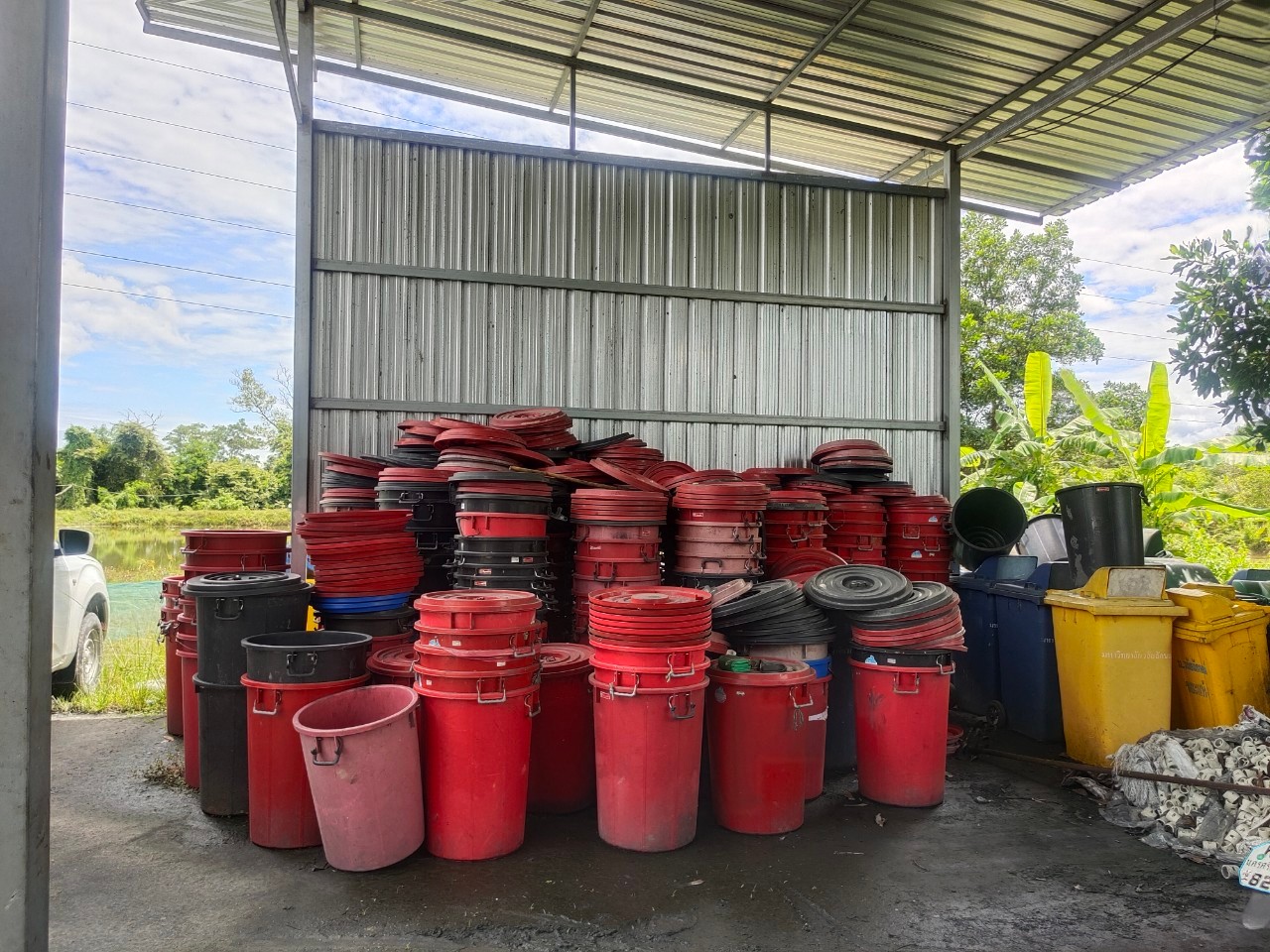
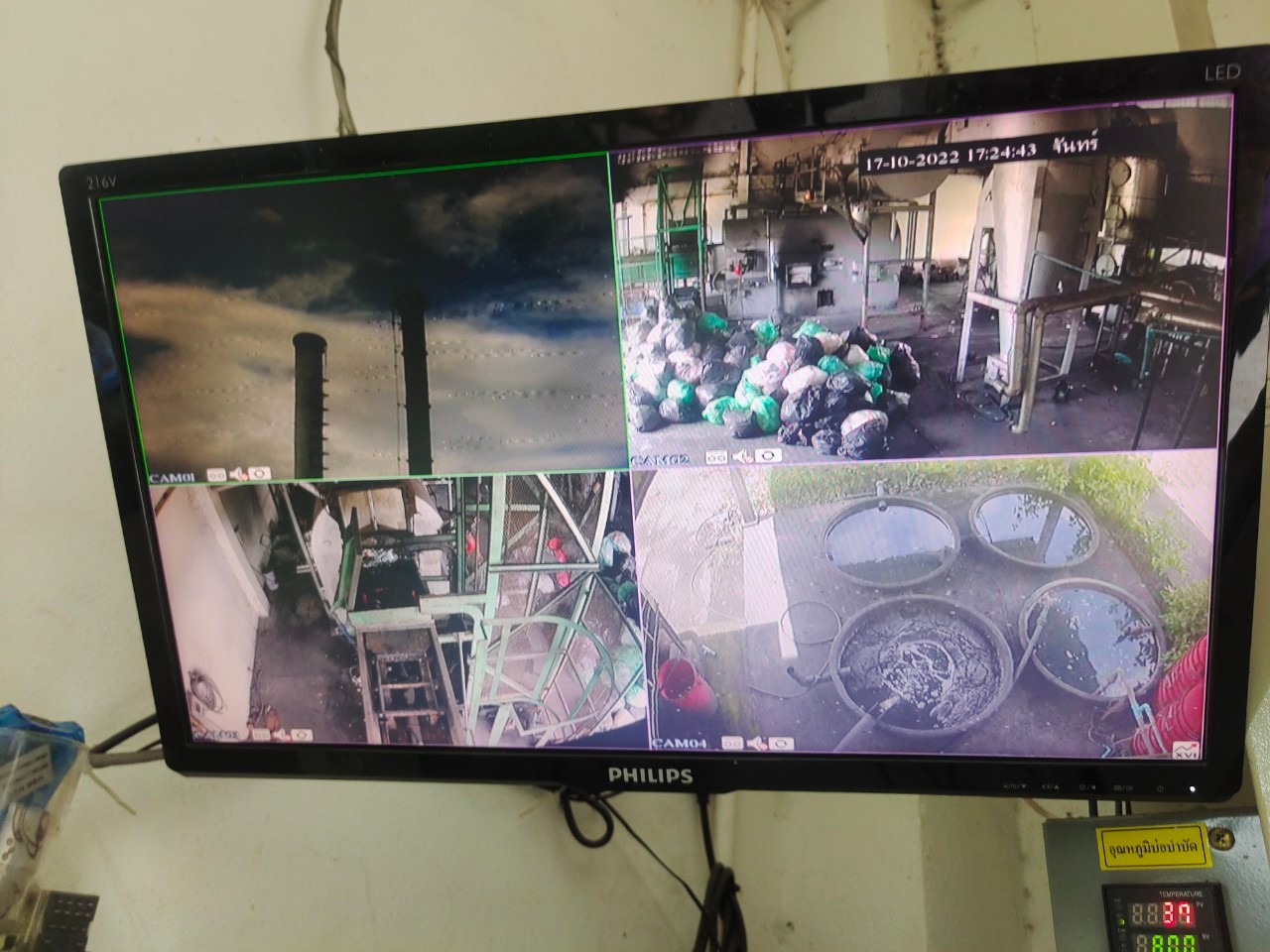
3.1 Reuse: Daily food waste is mainly directed to the university’s swine farm for feeding. This approach is the most actively managed.

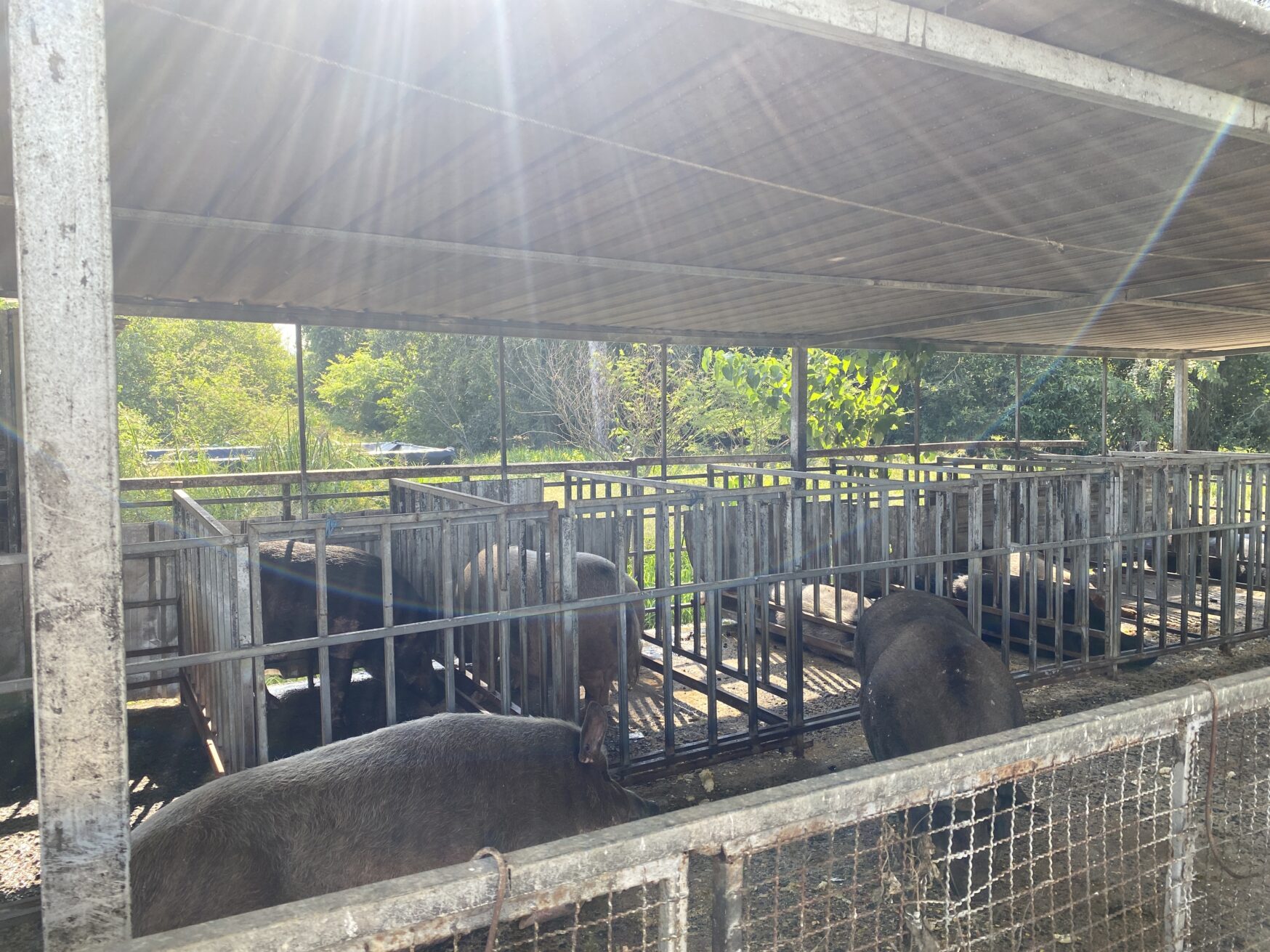
3.2 Recycle: The rest of the food waste will be redirected to recycling processes, such as biogas production via anaerobic fermentation and the creation of agricultural fertilizers.
3.3 Disposal: Food waste that is no longer suitable for use will be sent for disposal through incineration or landfilling.
Contributors:
Walailak University
- The Center for Academic Services
- The Division of Landscape Architecture
- The Division of Green Walailak University
Related Links:




